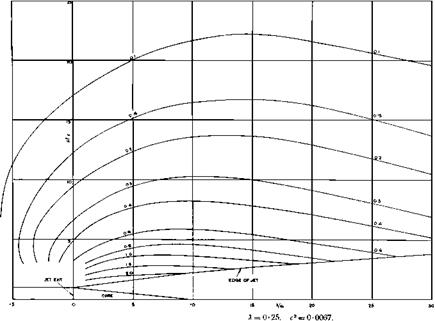Jet and Rocket Effects on Stability and Control
Except for the V/STOL case, jet and rocket effects on airplane stability and control tend to be small compared with those for high-powered propeller airplanes. This is because of the absence of slipstream and direct propeller effects. Yet, they are not negligible. By the time the first jet aircraft were being tested, the necessary theory was in place. Two new factors needed to be accounted for-jet intake normal force and airstream deviation due to inflow into the jet or rocket exhaust.
4.8.1 Jet Intake Normal Force
The NACA engineer Dr. Herbert Ribner, who was also an important contributor to the body of knowledge on propeller forces in yaw, or propeller normal forces, provided the analogous theory for jet air intakes, or an algorithm for jet normal force (Ribner, 1946). Ribner’s jet intake normal force formulation is based on the mass flow of air into each jet intake and the angle turned by this air to get into the duct. This method neatly avoids having to estimate or measure pressure distributions inside and outside of the intake ducts, although the resultant normal forces must be generated by those pressures.
One interesting refinement is to take into account the upflow before each jet intake caused by the wing’s lifting system. In sideslip, the corresponding correction is for any sidewash ahead of the intake. Fortunately, wing upflow angles are readily available in chart form for any wing planform.
Herbert Ribner was active until 2001, spending winters at the Langley Research Center as a NASA Distinguished Research Associate and the rest of the year at the University of Toronto.
|
Figure 4.6 Calculated isoclines of the surrounding flow into a jet wake. Destabilizing downwash for tails mounted above the jet wake is indicated by the positive deviation angles. (From Squire and Trouncer, British R & M 1974, 1944) |












